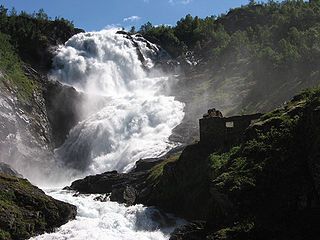A Conversation on Hydrokinetics
Reader: Hi Craig. This is an interesting report from DOE stating that there are over 30,000 potential hydroelectric sites in the US where hydro power could be used with minimal environmental impact as there are already structures in place in the water flow. It goes on to say that using just the best 100 sites could amount to 8GW of renewable energy.
Sometimes there are easy solutions. I think baseload hydro should be used before covering our deserts with solar panels and our plains with wind turbines. Solar and wind are today’s sexy choices and get the most publicity, and poor old hydro and geothermal get the scraps from the table.
Craig: To me, the issue is scale. As you pointed out, there is a limit to run-of-river hydro. If you multiply the weight of all the water in all the rivers in the U.S. by the altitude from which it falls (i.e., all the potential energy), you’re under a terawatt, even if you got it all. 8 GW is about one-seventh of 1% of the 5.4 TW we’re consuming as we speak. I’m not saying we shouldn’t do it, but it’s not the answer we need. And btw, geothermal doesn’t seem to be making headway in terms of costs coming down and competing with solar, wind, and fossil fuels.
Reader: I guess you’re right. It seems it’s going to take a variety of solutions to get this thing done.
Craig: Yes. I don’t turn up my nose at hydro, but I don’t spend too much time on it either.


Good points Craig, and I strongly agree.
But concerning non-powered-dams (NPD’s), the chief reason that these have not been converted into powered dams is the lack of financial motivation to do so. Most of these which have the potential for high capacity are locks that only have a gross head of ~10-40 ft, which means there must be tremendous amounts of water flow in order to produce each MW of power… That’s larger turbines, higher cost.
If the power was close to grid parity then you can be sure that independent groups of investors and hydropower contractors would be lobbying local governments and getting it done. But if you have a 12 ft head it will not be economically competitive to recover that energy… No-one wants to bother at that point.
Some potential hydro systems would be too small to make economic sense. However, if people live very close to such a site and do not have access to the grid, such a system could make sense for them.